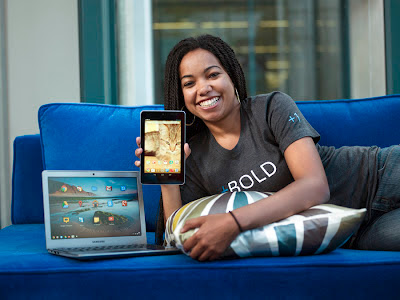Larry Page once described the perfect search engine as understanding exactly what you mean and giving you back exactly what you want. It’s very much like the computer I dreamt about as a child growing up in India, glued to our black-and-white TV for every episode of Star Trek. I imagined a future where a starship computer would be able to answer any question I might ask, instantly. Today, we’re closer to that dream than I ever thought possible during my working life—and here are some of the latest steps we’re taking today to make search even more intelligent:
1. Understanding the worldIn May we
launched the Knowledge Graph, our database of more than 500 million real-world people, places and things with 3.5 billion attributes and connections among them. The feedback has been phenomenally positive and we want to extend this feature to people outside the U.S. So starting today, you’ll see Knowledge Graph results across every English-speaking country in the world. If you’re in Australia and search for [chiefs], you’ll get the rugby team—its players, results and history.
We’ll also use this intelligence to help you find the right result more quickly when your search may have different meanings. For example, if you search for [rio], you might be interested in the Brazilian city, the recent animated movie or the casino in Vegas. Thanks to the Knowledge Graph, we can now give you these different suggestions of real-world entities in the search box as you type:

Finally, the best answer to your question is not always a single entity, but a list or group of connected things. It’s quite challenging to pull these lists automatically from the web. But we’re now beginning to do just that. So when you search for [california lighthouses], [hurricanes in 2008] or [famous female astronomers], we’ll show you a list of these things across the top of the page. And by combining our Knowledge Graph with the collective wisdom of the web, we can even provide more subjective lists like [best action movies of the 2000s] or [things to do in paris]. If you click on an item, you can then explore the result more deeply on the web:
So far we can produce hundreds of thousands of lists involving millions of items, and we’ll keep growing to match your curiosity. A quick preview:
2. Putting your info at your fingertipsSometimes the best answer to your question isn’t available on the public web—it may be contained somewhere else, such as in your email. We think you shouldn’t have to be your own mini-search engine to find the most useful information—it should just work. A search is a search, and we want our results to be truly universal. So we’re developing a way to find this information for you that’s useful and unobtrusive, and we’d love your
feedback. Starting today, we’re opening up a limited trial where you can
sign up to get information from your Gmail right from the search box.
So if you’re planning a biking trip to Tahoe, you might see relevant emails from friends about the best bike trails, or great places to eat on the right hand side of the results page. If it looks relevant you can then expand the box to read the emails:
We’re working on some even more useful features. For example, if you search for [my flights] we will organize flight confirmation emails for any upcoming trips in a beautifully easy-to-read way right on the search results page:
3. Understanding your intentOften the most natural way to ask a question is by asking aloud. So we’ve combined our speech recognition expertise, understanding of language and the Knowledge Graph so that Voice Search can better interpret your questions and sometimes speak the answers back as full sentences. This has been available on Android for a few weeks and people love it. It’ll soon be available on your
iPhone or iPad (iOS version 4.2+).
You just need to tap the microphone icon and ask your question, the same way you’d ask a friend. For example, ask “What movies are playing this weekend?” and you’ll see your words streamed back to you quickly as you speak. Then Google will show you a list of the latest movies in theaters near you, with schedules and even trailers. It works for everything from celebrity factoids to the height of Kilamanjaro and more. When Google can supply a direct answer to your question, you’ll get a spoken response too.
These are baby steps, but important ones on our way to building the search engine of the future—one that is much more intelligent and useful than it was just a few years ago. It’s a very exciting time to be working in this field.
Posted by Amit Singhal, SVP Google Search





















